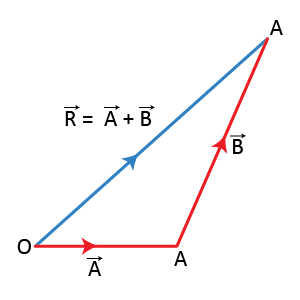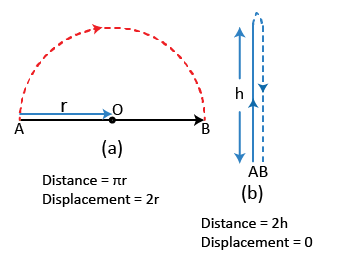Distance is the actual path covered by a moving particle in a given interval of time while displacement is the change in position vector, i.e., a vector joining initial to final position. If a particle moves from A to B as shown in Fig. the distance travelled is Δs while displacement is 

Distance is a scalar while displacement is a vector, both having the same dimensions[L] and the SI unit is metre.
The magnitude of displacement is equal to the minimum possible distance between two positions; so Distance ≥ |Displacement|
For motion between two points displacement is single–valued while distance depends on the actual path and so can have many values.
For a moving particle distance can never decrease with time while displacement can.
A decrease in displacement with time means the body is moving towards the initial position.
For a moving particle, distance can never be negative or zero while displacement can be negative.
In general, the magnitude of displacement is not equal to distance. However, it can be so if the motion is along a straight line without a change in direction.
The Magnitude of displacement is less than the distance travelled in the case of curvilinear motion.

